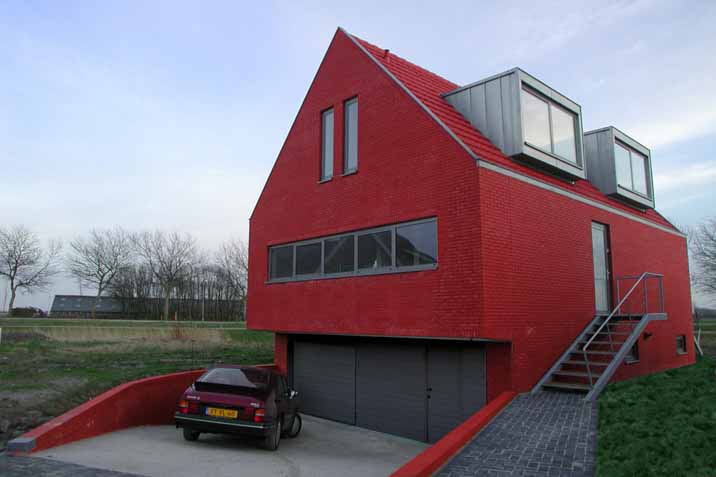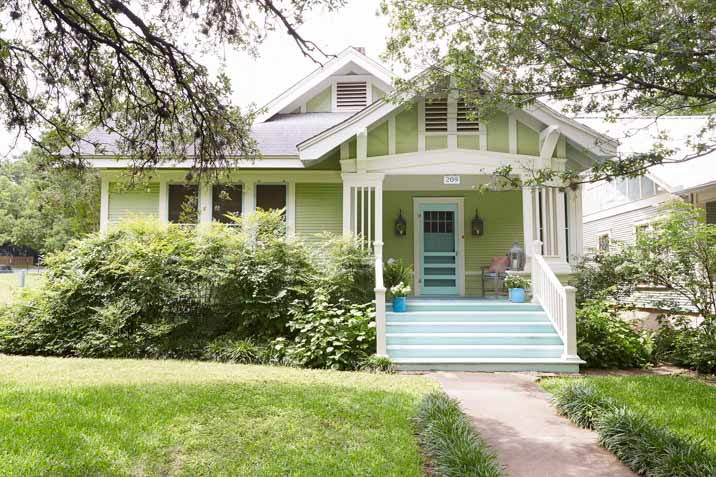
The latest trends in exterior colour schemes: 5 beautiful base colours for modern home exteriors
Over the last decade, the most common colour scheme for the exterior of a house has become blue-grey. The majority of house exteriors will have three base colours which are used to complement and define the features of the house.The colours and hues best suited to your house will often depend on the material of your exterior: for wood, neutral/light colours work best, especially with a warm hue. With brick, there is a lot of versatility in the colour choices depending on your preferences – for a bold look, bright and vivid colours like red will do the trick, whereas for something more understated you may turn to whites, greys, and light blues.
Australian houses tend to follow the globally dominant blue-grey or white colour schemes, as neutral houses blend well with surrounding buildings and unlikely to cause a fuss. Blue-grey is not the standard for all countries, however – in Sweden, the most common colour for a house is Falu red, due to the popular red-brick style.

Natural brick is very popular throughout the UK, and the colour of the house will depend on its age. Older houses are likely to have been made with local stone, so they will take their colour from whatever the local resources provided (usually a stone grey). Newer houses are most likely made from Red Clay Brick and so will have the common red tinge. Historically in Russia, it was very common to have a white house with blue accents and windows, and in small towns and villages this is still a common feature.

Neutral colours have long been a popular choice for the exterior of a home. This is because a house with grounded neutral tones is unlikely to become dated by the evolution of trends and they pair well with a variety of surrounding factors such as the neighbouring homes and the environment. Examples of popular tones include brown, beige, grey and ivory.
Trim options usually have a little more flair, though they often remain grounded in the earthy palate to maintain the sense of timelessness. Popular trims include softening colours such as blush or terracotta to break up the monochrome exterior.

There are also numerous practical benefits to painting a house. For one, it can increase the resale value of your house if the exterior is fresh and clean. It can also help to differentiate your home from other houses and is likely to make it stand out among the crowd.
On top of this, painting your house with high quality materials can actually help to protect it against the weather, dust and pests. It can drastically reduce the expenses of future repairs and even prevent wood from rotting. The process of repainting the home is also likely to reveal any potentially festering problems such as mold or water stains.

House painting can be expensive depending on paint colours, house size, and whether you want to hire professional house painting services. The cost to paint a house in Australia is on average $1-$3 per square foot. The cost of a painting job for a typical 4 bedroom home is between $4,000 - $20,000. Contact a prospective contractor for a quote as your house and design plans will greatly impact this price.
The type, quality and even colour of paint can influence its longevity. High quality paint - such as the Dulux outdoor range - in light hues or where the painter has applied multiple coats are likely to last the longest. For more information specific to colour, consult the list of exterior paint colour schemes below.
Exterior house colours: 5 modern exterior colour schemes for houses
5. Red

Red is a vibrant and lively colour which will create a bold tone for the exterior of your house. Red is still one of the most popular colour choices for a house in Sweden, and it is likely that the traditional American red-barn was actually pioneered by Swedish immigrants who moved to the US.

As such, a red house emulates the classic feeling of an old country barn or farmhouse. Painting a house red will characterize your house with a rural simplicity and elegance. However, because it is such a bold colour, red houses are best suited to environments where they are the only house in close proximity, as they will likely clash with a neutral palate.

Red houses are usually accented in various shades of grey. Red can be painted onto multiple surfaces such as horizontal clapboards or wood shakes, though the most common – and debatably most visually pleasing – is brick.

4. Blue

Blue houses can come in a huge variety of shades and hues, all of which communicate something different. A blue-painted house is always filled with personality, and it is a popular choice for those with creative tendencies.
A light blue house exterior expresses a sense of calm, playfulness and family.

A dark blue house exterior feels bold, modern and sophisticated.

Blue is usually offset with various shades of white, though it also contrasts beautifully against natural dark materials such as timber.

3. Grey

Grey is an excellent choice for an exterior paint colour scheme because of its many shades. Layering dark over white grey creates a textured look while maintaining the classy, timeless style that neutral colours benefit from.

A grey colour scheme also pairs beautifully with white trim, neatening the appearance and adding depth to the dimensions of the house. Another benefit to grey colour schemes is that they blend well with natural materials like stone, making a stone feature wall an easy opportunity to add some subtle visual intrigue.

2. White

White is a classic for a reason: it has a simplistic beauty and expresses reserved elegance. White also allows for some of the most creative styling choices as it matches with just about anything.

Pops of colour around a white home finalize the visual appeal, sure to enliven the exterior.

Plants are an especially popular choice to texturize white exteriors, as green accents appear more vivid against a white background and in turn make the white appear brighter.

1. Green

Green has a natural beauty that makes it a gorgeous and unique base for a house outside colour combination.

Often paired with very neutral greys and whites, green works best as a house exterior in a light, warm tone that blends with the natural surroundings.

Green is exceptionally beautiful when offset with natural building materials such as timber or stone, and creates a fairytale effect that is sure to enchant your guests.




